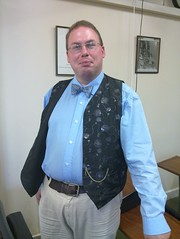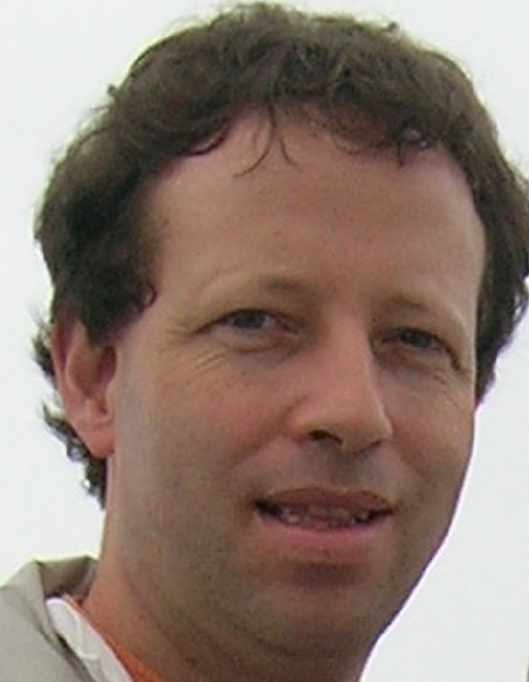Team:St Andrews/advisors
From 2010.igem.org
(Difference between revisions)
| (20 intermediate revisions not shown) | |||
| Line 5: | Line 5: | ||
</html> | </html> | ||
| - | + | All of the advisors gave us their knowledge and advice, both in technical matters and in the practical management of a team project. Olivia spent a great deal of time in the lab with us introducing techniques, offering her wisdom when things went wrong and making sure we didn't burn the place down. However the project itself was run by the students. It was up to us to decide on our topic and our strategy, finding information ourselves wherever we could. Synthetic biology, as a discipline is new to St Andrews, so our supervisors in some cases were amateurs in the same sense as we were. Therefore all work documented on our wiki is the work of the students unless stated otherwise. | |
| - | + | ||
| - | + | ||
| + | <html> | ||
| + | <h2>Anne Smith</h2> | ||
| + | <table border="0"> | ||
| + | <tr> | ||
| + | <td><img class="ph" border="0" src="http://biology.st-andrews.ac.uk/vannesmithlab/smith.jpg"/ width=150></td> | ||
| + | <td>Anne's research is in the field of computational biology. She examines complex biological networks, developing and evaluating algorithms to infer functional interactions based upon observational data. She works many levels of biological organisation, concentrating on networks in molecular, neuronal, and ecological systems. Her current research concentrates on the use of Bayesian networks to infer interactions in these biological systems.</td> | ||
| + | </tr> | ||
| + | </table> | ||
| - | + | <h2>Chris Hooley</h2> | |
| - | < | + | <table border="0"> |
| - | < | + | <tr> |
| - | <img class="ph" border="0" src="http:// | + | <td><img class="ph" border="0" src="http://farm5.static.flickr.com/4104/4842200944_78bf9ea418_m_d.jpg"/ width=150></td> |
| - | </ | + | <td>Chris is a theoretical condensed matter physicist working at the University of St Andrews</td> |
| - | < | + | </tr> |
| - | < | + | </table> |
| - | < | + | |
| - | < | + | <h2>John Mitchell </h2> |
| - | < | + | <table border="0"> |
| - | < | + | <tr> |
| - | < | + | <td><img class="ph" border="0" src="http://chemistry.st-andrews.ac.uk/staff/jbom/group/Pictures/jbom5432.bmp"/ width=150></td> |
| - | < | + | <td>John is interested in anything computational and related to molecules. After a PhD in theoretical chemistry, his first postdoc was in Biochemistry at UCL. He has been a lecturer at Birkbeck and at Cambridge, before coming to St Andrews in 2009. Since then, he has done lots of chemoinformatics, quite a lot of bioinformatics and only a little real theoretical chemistry. His scientific interests include computing the binding affinities between proteins and ligands, side-effects and toxicities of pharmaceuticals, and how much of a compound will dissolve in water. His group have worked extensively on the prediction of molecular properties such as melting point and solubility from chemical structure. They also use computational methods to study enzyme reaction mechanisms. They continue to develop the MACiE database of enzyme reaction mechanisms in collaboration with Prof. Janet Thornton at the EMBL-EBI. </td> |
| - | < | + | </tr> |
| - | < | + | </table> |
| - | John is interested in anything computational and related to molecules. | + | |
| - | < | + | <h2>Wim Verleyen</h2> |
| - | < | + | <table border="0"> |
| - | </ | + | <tr> |
| + | <td> | ||
| + | <img class="ph" border="0" src="http://sphotos.ak.fbcdn.net/hphotos-ak-snc3/hs220.snc3/22772_272858909741_817944741_3098386_7019198_n.jpg"/ width=150> | ||
| + | </td> | ||
| + | <td> | ||
| + | Wim Verleyen studied Electronics in Secondary School. He then obtained 2 Master degrees: one in Electrical | ||
| + | Engineering and one in Computer Science. His interests in computer security lead him to be active as a | ||
| + | Software Maintenance Engineer on Electronic Payment terminals and then as a Software Developer for | ||
| + | Authentication and Internet Security Appliances. His research areas moved towards the complexity of | ||
| + | networks, complex systems, medical applications/drug development, mathematical modelling, simulation, | ||
| + | etc. This resulted in a research position at the BISI (Bio-statistics and Medical informatics) department at the | ||
| + | Free University of Brussels, where he took part in an inter-university project on diabetic drug development | ||
| + | and worked as a System Administrator at the medical campus. He studied for a state certificate in Financial | ||
| + | Law at the European College University of Brussels. In the summer of 2008 he was accepted for a studentship | ||
| + | that is partly funded by the School of Biology at the University of St Andrews and partly by a SULSA prize | ||
| + | Systems Biology Studentship. | ||
| + | </td> | ||
| + | </table> | ||
| + | |||
| + | <h2>Olivia Mendivil</h2> | ||
| + | <table border=0> | ||
| + | <td> | ||
| + | <img class="ph" border="0" src="http://sphotos.ak.fbcdn.net/hphotos-ak-snc1/hs269.snc1/9622_141369037832_622357832_2512788_8162816_n.jpg"/ width=150> | ||
| + | </td> | ||
| + | <td> | ||
| + | Olivia is a PhD candidate at University of St Andrews funded by the BBSRC. The focus of her PhD is in the exciting field of evolutionary biology. Previous to that she did a master in bioinformatics at University of Glasgow. During her master period is when she found out about synthetic biology and iGEM and found it creative, extremely cool and different from what she has done previously. During this summer she has been the lab-bandido trying to bring out the potential scientists in the igem students. | ||
| + | </td> | ||
| + | </table> | ||
</html> | </html> | ||
Latest revision as of 23:18, 27 October 2010


Meet the Advisors
All of the advisors gave us their knowledge and advice, both in technical matters and in the practical management of a team project. Olivia spent a great deal of time in the lab with us introducing techniques, offering her wisdom when things went wrong and making sure we didn't burn the place down. However the project itself was run by the students. It was up to us to decide on our topic and our strategy, finding information ourselves wherever we could. Synthetic biology, as a discipline is new to St Andrews, so our supervisors in some cases were amateurs in the same sense as we were. Therefore all work documented on our wiki is the work of the students unless stated otherwise.
Anne Smith
 |
Anne's research is in the field of computational biology. She examines complex biological networks, developing and evaluating algorithms to infer functional interactions based upon observational data. She works many levels of biological organisation, concentrating on networks in molecular, neuronal, and ecological systems. Her current research concentrates on the use of Bayesian networks to infer interactions in these biological systems. |
Chris Hooley
 |
Chris is a theoretical condensed matter physicist working at the University of St Andrews |
John Mitchell
 |
John is interested in anything computational and related to molecules. After a PhD in theoretical chemistry, his first postdoc was in Biochemistry at UCL. He has been a lecturer at Birkbeck and at Cambridge, before coming to St Andrews in 2009. Since then, he has done lots of chemoinformatics, quite a lot of bioinformatics and only a little real theoretical chemistry. His scientific interests include computing the binding affinities between proteins and ligands, side-effects and toxicities of pharmaceuticals, and how much of a compound will dissolve in water. His group have worked extensively on the prediction of molecular properties such as melting point and solubility from chemical structure. They also use computational methods to study enzyme reaction mechanisms. They continue to develop the MACiE database of enzyme reaction mechanisms in collaboration with Prof. Janet Thornton at the EMBL-EBI. |
Wim Verleyen

|
Wim Verleyen studied Electronics in Secondary School. He then obtained 2 Master degrees: one in Electrical Engineering and one in Computer Science. His interests in computer security lead him to be active as a Software Maintenance Engineer on Electronic Payment terminals and then as a Software Developer for Authentication and Internet Security Appliances. His research areas moved towards the complexity of networks, complex systems, medical applications/drug development, mathematical modelling, simulation, etc. This resulted in a research position at the BISI (Bio-statistics and Medical informatics) department at the Free University of Brussels, where he took part in an inter-university project on diabetic drug development and worked as a System Administrator at the medical campus. He studied for a state certificate in Financial Law at the European College University of Brussels. In the summer of 2008 he was accepted for a studentship that is partly funded by the School of Biology at the University of St Andrews and partly by a SULSA prize Systems Biology Studentship. |
Olivia Mendivil

|
Olivia is a PhD candidate at University of St Andrews funded by the BBSRC. The focus of her PhD is in the exciting field of evolutionary biology. Previous to that she did a master in bioinformatics at University of Glasgow. During her master period is when she found out about synthetic biology and iGEM and found it creative, extremely cool and different from what she has done previously. During this summer she has been the lab-bandido trying to bring out the potential scientists in the igem students. |
 "
"